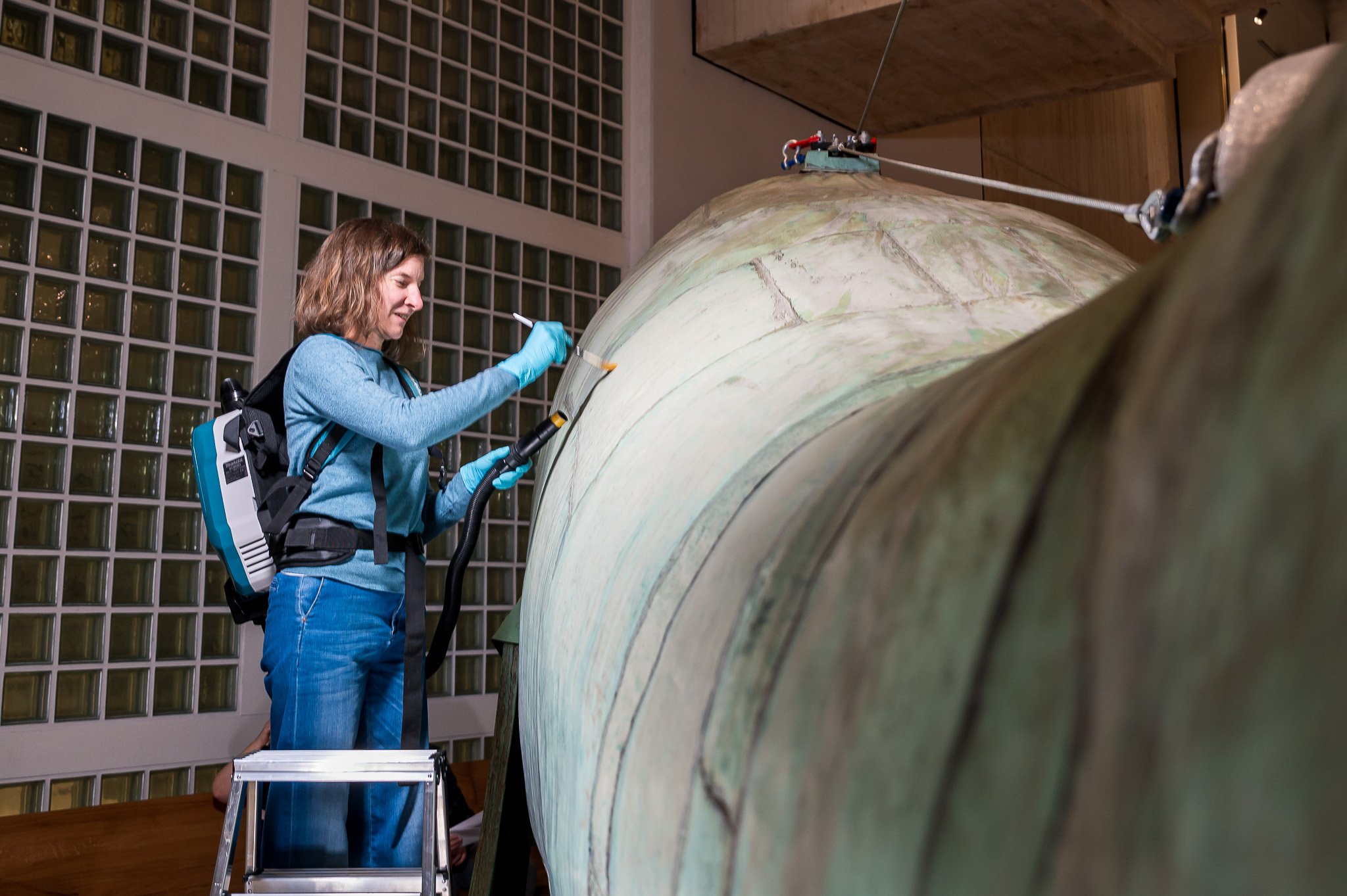Dürer vs. Leonardo: Who Drew It Better? (Spoiler: They Both Did)
Dürer & Leonardo: Masters of Light and Shadow
The Albertina Museum presents the extraordinary exhibition Leonardo – Dürer. Renaissance Master Drawings on Colored Ground that brings together two of the greatest minds in art history: Albrecht Dürer and Leonardo da Vinci. Both artists revolutionised drawing and painting techniques, pushing the boundaries of how light, shadow, and form could be represented. This exhibition delves into their artistic experiments, personal histories, and the impact of their works on future generations.
More photos of this exhibition can be found on my Gallery Website.
Exhibition Views "Leonardo – Dürer" at Albertina, 2025
The Art of Light and Shadow
Dürer and Leonardo both explored the interaction of light and shadow in their drawings. Instead of using a primed canvas, they often worked on colored paper, which allowed them to build their images by layering light over dark, similar to photography. This technique gave their works incredible depth and plasticity. While painters traditionally applied dark tones first and added highlights last, these masters worked inversely when drawing on toned paper. This innovative approach made their studies appear more vivid and realistic, giving figures an almost sculptural quality.
Leonardo da Vinci: The Relentless Innovator
Leonardo produced thousands of drawings, ranging from anatomical studies to scientific explorations and artistic sketches. He was a polymath, constantly investigating how materials, fabrics, and human forms interacted with light and movement.
One of his unique practices was draping fabric in plaster to study how folds formed and stayed in place for the long periods of time he needed to draw it perfectly. These meticulous studies influenced his depiction of clothing in paintings, bringing a lifelike dynamism to his works. Despite his genius, Leonardo left many of his paintings unfinished. His relentless pursuit of perfection meant that he often revised and altered his compositions, sometimes leaving works in a perpetual state of transformation.
Exhibition Views "Leonardo – Dürer" at Albertina, 2025
Dürer’s Precision and Branding Genius
Albrecht Dürer was not only a master draftsman but also a savvy businessman. He developed a monogram signature (AD) to protect his works from forgery (sketches were even easier to forge than oil paintings!) and ensure authenticity. His wife played a crucial role as well, traveling across Europe to sell his works and establish his reputation. Dürer’s refined brushwork became legendary. A famous anecdote tells of a fellow artist who, amazed by Dürer’s intricate lines, asked for two of his brushes. Dürer handed him his thickest brushes, demonstrating that true skill lay in the artist’s technique, not just the tools (reminding me of people stating that my camera is ‘oh so pro’ that it has to produce good photos automatically)
The Influence of Collectors and Market Forces
Dürer’s works were in high demand among collectors, but some were altered for financial gain. A person associated to the Albertina once cut one of his drawings in half, transforming it into two separate pieces to sell them at a higher price. Similarly, England’s royal collection marked its possessions with stamps, ensuring their provenance, as seen on some of Leonardo’s drawings.
Leonardo’s Forbidden Studies
Leonardo’s anatomical studies were groundbreaking but also highly dangerous. While it was common to dissect animals, examining human corpses was punishable by death. Despite the risks, Leonardo dissected over 20 human bodies, documenting his findings in extraordinary detail. These studies provided invaluable insights into human anatomy, influencing generations of artists and scientists.
To protect his discoveries, Leonardo often wrote in mirror script, which could only be read using a mirror. While some believe this was to prevent smudging (as he was left-handed), others speculate it was to keep his research secret from rivals like Raphael.
When Size Didn’t Matter, But Details Did
The exhibition at the Albertina Museum showcases a selection of intimately scaled drawings, some measuring only a few centimeters in size. These diminutive masterpieces, such as Dürer's "Praying Hands" (yes, they are exhibited as original drawing - don’t miss it!) invite viewers to engage closely, revealing intricate details that will otherwise be overlooked. To fully appreciate the delicate lines and subtle shading employed by these Renaissance masters, visitors are encouraged to use magnifying glasses.
Additionally, the exhibition includes works by Raphael, Titian, Albrecht Altdorfer, Hans Baldung Grien, Hans Holbein the Elder and other outstanding Renaissance masters.
Exhibition Views "Leonardo – Dürer" at Albertina, 2025
A Legacy That Endures
The works of Dürer and Leonardo continue to inspire artists, historians, and scholars today. Their relentless pursuit of knowledge, innovation in artistic techniques, and understanding of human nature set new standards in the art world.
This exhibition at the Albertina provides a rare opportunity to explore their artistic processes up close, offering insights into how two of history’s greatest minds shaped the evolution of drawing, painting, and visual storytelling.
The "Leonardo – Dürer: Renaissance Master Drawings on Colored Ground" exhibition at the ALBERTINA Museum in Vienna runs from March 7 to June 9, 2025.
More photos of this exhibition can be found on my Gallery Website.


















